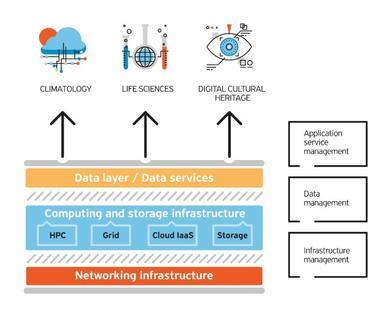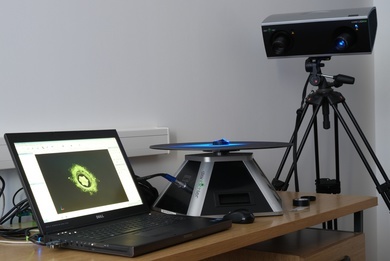VI-SEEM: The 7th research EU project where the Faculty of Electrical Engineering of UNBL participates
University of Banja LukaGeneralThe Faculty of Electrical Engineering of the University of Banja Luka for a year participate in the project VI-SEEM (VRE for Regional Interdisciplinary Communities in Southeast Europe and the Eastern Mediterranean). It is the seventh RESEARCH project within the structure of research programs of the European Union (formerly FP, now Horizon Program 2020), which the the Faculty of Electrical Engineering implements during the past 11 years.
This is a three-year project which aim is to create a single virtual research environment (Virtual Research Environment-VRE) in Southeastern Europe and the Eastern Mediterranean (Southeast Europe and the Eastern Mediterranean -SEEM), in order to facilitate interdisciplinary regional cooperation in the field of biosciences, climatology and digital cultural heritage.
Beside the Faculty of Electrical Engineering, University of Banja Luka, as a representative of BiH, the partners are universities, research networks and institutes from 14 other countries (Greece, Cyprus, Bulgaria, Serbia, Hungary, Romania, Albania, Macedonia, Montenegro, Moldova, Armenia, Georgia, Egypt, Israel and Jordan.
Representatives of The Faculty of Electrical Engineering are: Prof. Dr. Milorad Bozic, as a coordinater, and Mr. Mihajlo Savic, Vladimir Risojevic and Ognjen Calic. In the structure of VI-SEEM project, the Faculty of Electrical Engineering is responsible for the digital cultural heritage in BiH (Digital Cultural Heritage), and all of the activities related to its digitization, database search, presentation of these data and. Faculty cooperates with institutions from this field such as the Museum of the Republic of Srpska and Association of archaeologists of the Republic of Srpska.
These days, as Mr. Savic explains, is in the process of testing applications for automatic recognition and classification of images obtained by recording using drones and 3D scanning of archaeological artifacts. There was previously made an application for the classification of terrain that allowed the computer to recognize the type of terrain (forests, urban areas, archeological site), while the 3D scanning of artifacts, for example, enables higher quality work analysis of digitized archaeological artifacts, and easier sharing and presentation of information with other stakeholders.
The fact that the VI-SEEM is the 7th project of the European Union in the last 11 years in which the Faculty of Electrical Engineering UNBL has been a partner, it is the best indicator of its success. Immediately after joining the first project in 2005, the Faculty proved to be a credible, high-quality and reliable partner, thanks to the seriousness, technical capacity, but above all the quality, accountability and expertise of its staff.
The result of the participation The Faculty of Electrical Engineering in the first project (SEE-GRID -South East European Grid-enabled Infrastructure Development), was the creation of the first computer cluster, and within the next two projects (SEE FIRE and SEEREN2), it was defined the initial topology of optical communications of future academic network in B&H, an infrastructure, SARNET - academic network through which our university comes to the internet.
After the successful completion of the first delegated tasks, the Faculty of Electrical Engineering , from informal participants of the project, became the formal and since 2006 it became coordinator for B&H, and because of its responsibility, reliability, professionalism and a great effort, today the Faculty of Electrical Engineering has a reputation as a serious and credible partner in the EU.
Apart from the evident practical contribution to scientific research that goes beyond the structure of the Faculty and the University, a number of scientific papers published in renowned international journals, and many master's and PhD theses and incurred as a result of the use of equipment and work within these projects. The product of projects is a large amount of technical documentation. For example, the SEE FIRE project (South-East Europe Fibre Infrastructure for Research and Education), has a generated document that has served for years throughout Southeast Europe as a book that explains how to make academic network, expire at the Faculty of Electrical Engineering.
On the other hand, participating in these projects, assistants, teachers and staff of the Faculty of Electrical Engineering have improved their professional skills, getting in touch with the most successful researchers and scientists, and learning from the best experts is extremely valuable experience.
The benefits of projects implemented by the Faculty of Electrical Engineering have individuals and institutions outside the Faculty, since within each of them, experts from the the Faculty show users how to use and apply modern technology. Also, the Faculty of Electrical Engineering enabled its customers who need access to supercomputer resources that do not exist in Bosnia and Herzegovina, to perform complex computer simulations for free.
More details about the main effects and the types of projects under the research programs (FP and Horizont 2020) in which the Faculty of Electrical Engineering of University of Banja Luka participated as a partner, you can find in the appendix.




